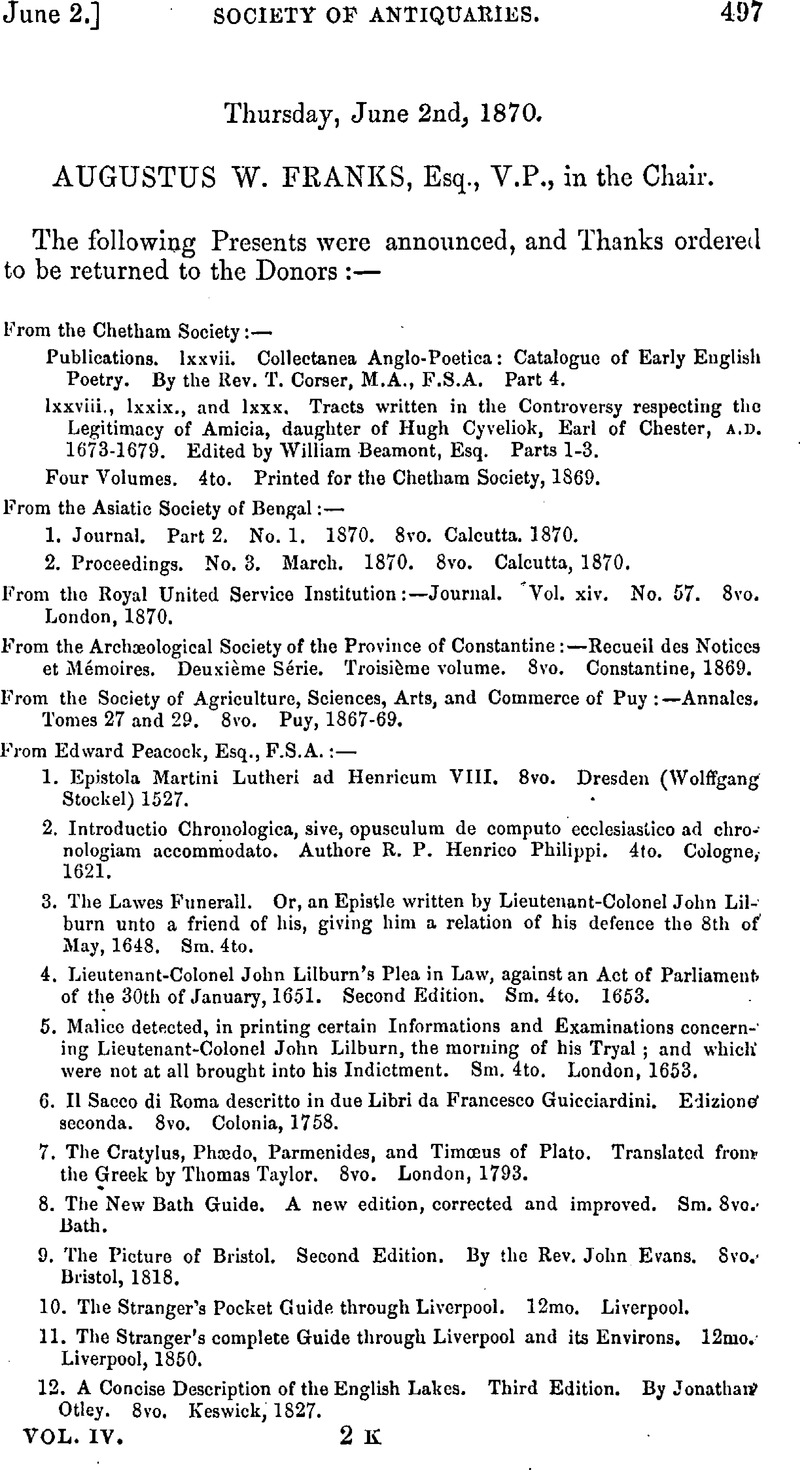No CrossRef data available.
Published online by Cambridge University Press: 10 May 2010

page 499 note * Engraved in Price's Description of the Bucklersbury Mosaic, Lond., 1870, p. 73.
page 500 note * Perhaps this may be a later rendering of Ζεὺς στζτιος, mentioned by Herodotus (v. 119) as having a sanctuary in a grove of plane-trees at Labranda, in Caria. Compare Strabo, xiv. p. 659. Plutarch, in his life of Pyrrhus (c. 5), speaks of an altar of Ζεὺς Ἂζειος at Passaron, in Epirus, where each new king and his people were accustomed to take mutual oaths. Fausanias (v. 14, 6) connects another such altar in Elis with the legend of Ænomaüs.
page 503 note * A. S. Chron. ed. Thorpe, sub anno.
page 506 note * Hutchinson's Memoirs, Bolin's od. p. 189.
page 506 note † Ibid. p. 190.
page 506 note ‡ Ibid. p. 222.
page 507 note * Hutchinson's Memoirs, Bohn's ed. p. 276.
page 507 note † Ibid. p. 281.
page 507 note ‡ Ibid. p. 306.
page 507 note § Ibid. p. 281.
page 511 note * See ante, p. 458, for a similar thurible.
page 512 note * Colonel Lane Fox, in noticing this discovery in the “Ethnological Journal,” vol. ii. page 342, is disposed to consider these markings as moulds for casting bronze celts. For examples of such moulds cut in stone and without counterparts, see Wilde's Catalogue of Museum of Irish Academy, p. 392.
page 515 note * See also Hoare's Ancient Wiltshire, vol. ii, p. 122, and Horsley's Britannia Romana, p. 329.
page 515 note † M. Claudius Tacitus was Emperor from September, a.d. 275, to April, 276.